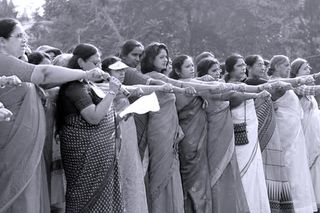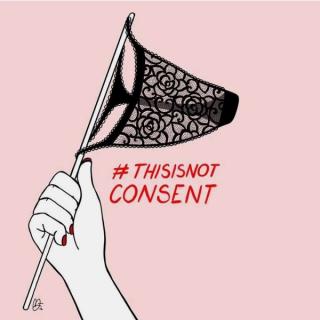
Is the Kerala Women’s Wall a Political Ploy? Sure. But It’s Also Amazing.
What is most notable about this rally is, perhaps, what most compromises it in the eyes of detractors: the backing of the state.

Yesterday, on 1 January, at least 35 lakhs of women in Kerala lined the roads between Kasaragod and Thiruvananthapuram, forming a “Woman’s Wall” roughly 600 km long and pledging to uphold the values of Kerala’s renaissance — essentially, to uphold gender equality and secularism.
“Very often, religious beliefs and sentiments have been employed to use women in subordinate positions. Today, dear sisters, you have made history. You have resisted against the dark forces that want to push women back into the dark ages. You have built the wall of resilience to take forward the values of social reforms, which are critical for women’s advancement in 21st century. Kerala, you have moved ahead, not only for the women of Kerala but for the women across India,” The News Minute reports CPI (M) politburo member Brinda Karat, who started the chain in Vellayambalam, as saying.
Additionally, thousands of men mirrored the Women’s Wall in a parallel line, also in support of gender equality.
The unspoken flashpoint that prompted the wall is, of course, the Supreme Court’s ruling to allow women of all ages to enter the Sabarimala temple, which previously prevented women of menstrual age (arbitrarily 10 to 50 years) from entering. Not that any woman has successfully entered since the ruling; right wing agitators have turned back all women who have made the attempt.
Organized and led by the state government, as well as several political parties, social activists, and religious organizations, the event is being hailed as a pivotal moment in women’s politics.
That is, when it’s not being excoriated for an unabashed political ploy by the state’s current government.
What’s missing in these analyses, however, is the idea that that a “Woman’s Wall” could be both. There is likely fairness in criticism of the wall, with reports that some women were coerced into participation (which the government denies), only Hindu communities were involved in its planning, and some of the male leaders participating have been hypocritically un-feminist in practice.
“In Kerala, which NITI-Aayog recently said was the place where gender equations were the most heart-warming in the country, the Sabarimala ban on women was never an issue of female empowerment. The stricture was nothing more than a unique religious practice. Before the Supreme Court verdict on September 28, the state had never given it as much thought as even singer Yesuda’s entry into Guruvayur,” writes Ayyappan R for Manorama.
This is probably true. But the thing about endemic and toxic patriarchy is that a lot of things are never an issue of female empowerment — oppression is merely the norm, tooling along, business as usual — until suddenly, one day, they are. Then, that oppression is challenged, equality demanded. I don’t pretend to be an expert on Kerala politics, but the rhetoric justifying the ban of women from Sabarimala temple is currently one of the highest-profile examples of rape culture India has; to dismiss it as merely a ploy — and in doing so, imply the women involved are its pawns — and deny it as an issue of female empowerment worthy of political engagement seems short sighted at best, and patronizing at worst.
What is most notable about this rally is, perhaps, what most compromises it in the eyes of detractors: the backing of the state. Political institutions are imperfect; among their many flaws, they are typically upholders and perpetuators of the status quo. Which is what makes the state government’s support for the Women’s Wall so notable. Progress toward equality is most powerful when it is backed by institutional support from within the power structure. Considered in the context of India’s broader, ongoing #MeToo movement, this unspoken show of institutional support for gender equality in practice as well as theory reaches far beyond the Sabarimala temple issue.
Like the women themselves, the Women’s Wall is multifaceted. Is it a political power play? Sure. Could it have been better conceived and executed? Probably. But is it also an institution-led protest against the deep gender inequality ingrained into most of society’s institutions? Undoubtedly. And that makes it a great way to start a new year.
Liesl Goecker is The Swaddle's managing editor.
Related


From “Sick” to “We That Are Young”: The Ultimate Women‑Centric Reading List from 2018
